Transportation infrastructure and civic architecture #4:The Monroe Street Bridge as an opportunity to reknit the built environment/street fabric
In the planning process for the Brookland Small Area Plan in 2007, I distinctly remember discussing the possibility of building "liner buildings" across the bridge, to re-knit the east (where Catholic University is) and west sides of Brookland, which is split by the Metropolitan Branch railroad corridor--originally constructed in the 1870s for the B&O Railroad.
GGW has a piece, "Brookland is getting a new bridge at Monroe Street," on the reconstruction of the Monroe Street bridge in Brookland. This bridge crosses the railroad and Metrorail tracks of the Metropolitan Branch, and on the north side it abuts the Brookland Metrorail station.
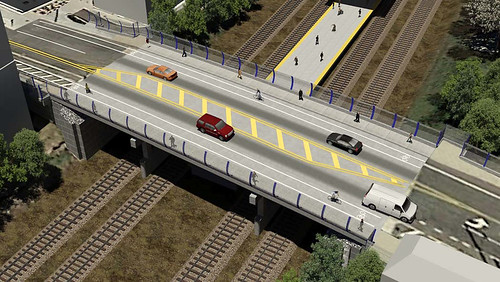
Monroe Street Bridge reconstruction, Brookland neighborhood, Washington, DC
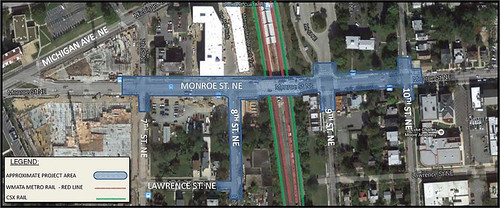
The project area is from 7th to 10th Streets on Monroe Street, and 8th Street.
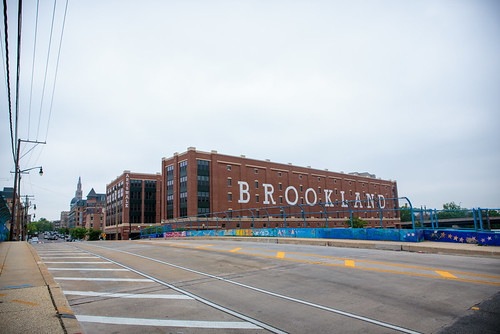
Monroe Street Bridge, current conditions. Photo by Cheriss May.
But the possibility of liner buildings don't appear to be on the agenda as part of the bridge reconstruction process, although they could still be built when the Brookland Metrorail site is redeveloped.
During the Small Area planning process, participating residents were "worked up" over the separation and proposed "a deck over the station," not realizing that because of topographical and/or engineering issues, (1) it wasn't possible and (2) would merely create a different kind of separation (see "Brookland planning" and "Rethinking the Metropolitan branch railroad and subway tracks in Northeast DC").
However, liner buildings alongside the Monroe Street bridge, and possibly alongside the Drew/Michigan Avenue bridge north of the station, would go a long way towards reknitting the street fabric in this area, and accomplishing the intent of the residents concerned about physical division of the neighborhood into two sections.
Examples would be the Lefferts Boulevard subway station on the A line in Forest Hills, Queens, New York City and the construction of a "liner building" across the I-670 Freeway near Union Station in Columbus, Ohio (The Cap at Union Station Columbus, Ohio, Urban Land Institute).
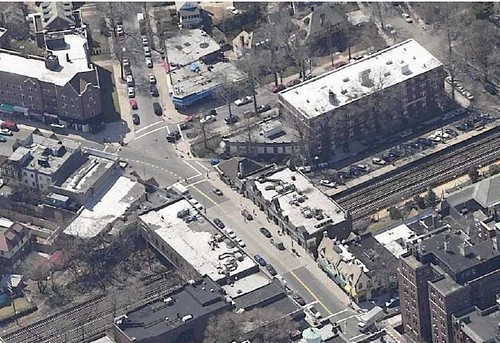
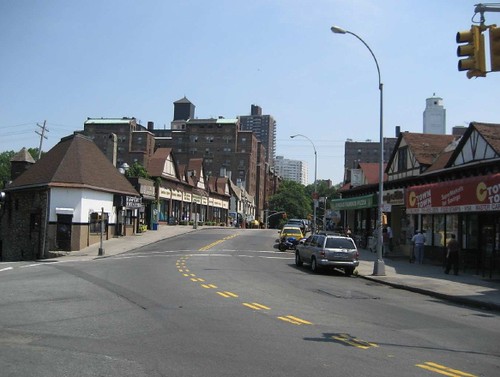
Lefferts Boulevard Bridge with Retail buildings over the subway tracks, Forest Hills.
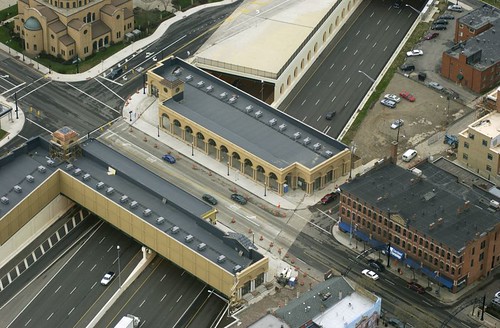
Cap over the I-670 Freeway at Union Station, Columbus, Ohio.
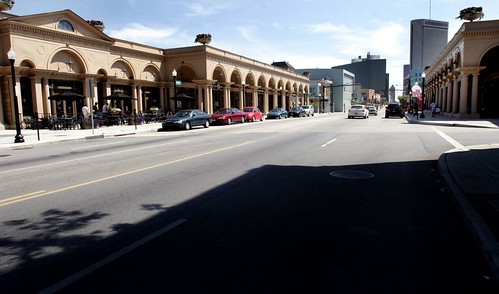
The argument in the first piece in this series, "Transportation infrastructure as a key element of civic architecture/economic revitalization #1: the NoMA Metrorail Station," avers that the best return on public investment in revitalization comes from transportation infrastructure.
But the proviso is such projects "need to be done right" and often they projects need to be executed in extranormal, visionary ways.
There are many examples of transportation infrastructure projects that don't have the kind of economic benefits that were touted. That's because the projects were satisficed. A project that doesn't aim to maximize spillover benefits will not maximize ROI.
So far, the Brookland bridge project does not appear as if it will facilitate the deeper economic benefits that are desired and achievable, although again, the proviso is that such development could come when the station site is redeveloped, in 10 to 15 years time.
Labels: civic architecture, public realm framework, transportation infrastructure, transportation planning, urban design/placemaking



1 Comments:
Good post.
At least they should make the sidewalk areas wider, perhaps 20-30 feet on both sides.
At this rate, the only way we are going to get some meaningful change for the better is when they build the Grand Arc!
http://wwwtripwithinthebeltway.blogspot.com/2015/01/grand-arc.html
Post a Comment
<< Home